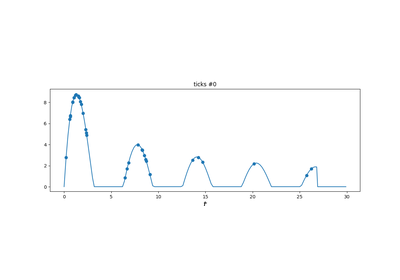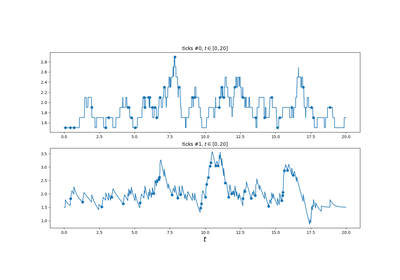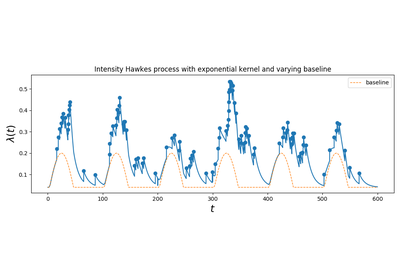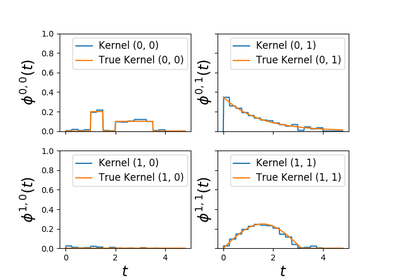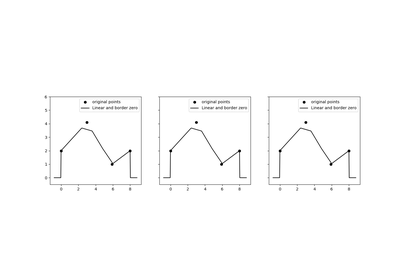tick.base.TimeFunction¶
-
class
tick.base.TimeFunction(values, border_type: int = 0, inter_mode: int = 0, dt: float = 0, border_value: float = 0)[source]¶ A function depending on time.
It is causal as its value is zero for all \(t < 0\).
- Parameters
values :
floatortupleif a float is given the TimeFunction is constant and equal to this float
a tuple of two numpy arrays
(t_values, y_values)whereyis the value taken by the TimeFunction at timest
border_type : {Border0, BorderConstant, BorderContinue}, default=Border0
Handle the values returned after the after the last given
t. This is only used if the TimeFunction is not a constant.Border0: value will be \(0\)BorderConstant: value will be given byborder_valueBorderContinue: value will equal to the last known valueCyclic: value will be equal the value it would have had in the original given values, modulo the support.
inter_mode : {InterLinear, InterConstLeft, InterConstRight}, default=InterLinear
Handle the way we extrapolate between two known values. This is only used if the TimeFunction is not a constant.
InterLinear: value will be linearly interpolated following the formula \(f(x) = \frac{y_{t+1} - y_{t}}{x_{t+1} - x_{t}}\)InterConstLeft: value will be equal to the next known pointInterConstRight: value will be equal to the previous known point
dt :
float, default=0The value used for the sub-sampling. If left to 0, it will be assigned automatically to a fifth of the smallest distance between two points
border_value :
float, default=0See
border_type,BorderConstantcase
Notes
TimeFunction are made to be very efficient when call if to get a specific value (\(\mathcal{O}(1)\)), however this leads us to have it taking a lot of space in memory.
Examples
>>> import numpy as np >>> from tick.base import TimeFunction >>> t_values = np.array([0, 1, 2, 5], dtype=float) >>> y_values = np.array([2, 4.1, 1, 2], dtype=float) >>> linear_timefunction = TimeFunction([t_values, y_values]) >>> # By default the time function will give a linear interpolation from >>> # the two nearest points for any time value >>> '%.2f' % linear_timefunction.value(2) '1.00' >>> '%.2f' % linear_timefunction.value(3) '1.33' >>> # and it equals 0 outside of its bounds >>> linear_timefunction.value(-1) 0.0 >>> linear_timefunction.value(7) 0.0
